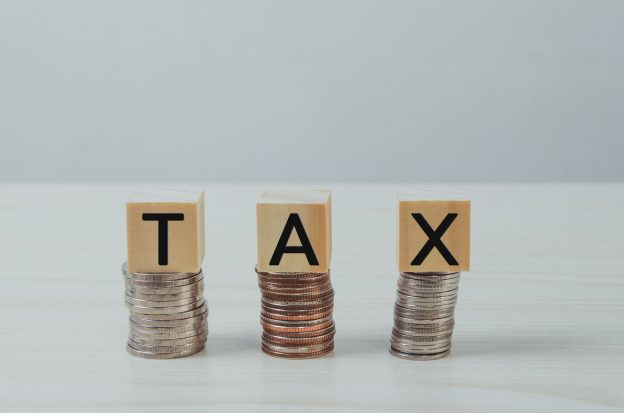
Wondering exactly how much tax will I pay on 40,000 pounds in the UK this year? You’re certainly not alone.
As a basic example if you work a standard forty-hour week and have a personal allowance of £12,570, you would take home about £32,319.60 each year or around £2,693.30 every month.
Tax calculations can feel like navigating a complex maze, especially with the regular changes to tax rates and thresholds made by the government.
For many professionals, a £40,000 salary represents a significant milestone – yet understanding exactly how much reaches your bank account each month requires knowledge of several different deductions.
Income tax bands, national insurance contributions, and various tax allowances can all affect your take-home pay.
Making £40,000 a year puts you ahead of around 70% of workers in the UK, which is quite an accomplishment. The next challenge is to keep as much of that money as you can.
Understanding what happens to your £40,000 salary before it reaches your pocket can help you make informed financial decisions and maximise your take-home pay.
Calculating tax on a £40,000 Salary
The UK tax system consists of two primary components that affect your salary: Income tax and national insurance contributions.
Breaking down the calculation into simple steps will help you understand precisely how your annual salary translates to monthly take-home pay.
The calculations below are an example and assume you’re on the standard tax code 1257L with no other income sources, deductions, or salary sacrifice arrangements.
They also assume you’re employed rather than self-employed, as the calculation method differs for self-employment income.
Deducting the personal allowance
First, we need to subtract your personal allowance from your gross annual salary:
- Gross annual salary: £40,000
- Personal allowance: £12,570
- Taxable income: £40,000 – £12,570 = £27,430
This initial £12,570 of your income is completely tax-free. For most people earning £40,000, the full personal allowance applies.
Applying the basic rate tax band
After deducting your personal allowance, the remaining £27,430 falls entirely within the basic rate tax band, which applies to income between £12,571 and £50,270.
Income tax calculation:
£27,430 × 20% = £5,486
This is your total Income Tax liability for the year. As your income doesn’t reach the higher rate threshold of £50,271, you won’t pay any tax at the 40% rate.
Estimating national insurance contributions
Besides income tax, you’ll also pay national insurance contributions (NIC’s). For the 2024/25 tax year, employees pay:
- 0% on earnings up to £12,570
- 8% on earnings between £12,570 and £50,270
- 2% on any earnings above £50,270
For a £40,000 salary, your NICs would be:
- £0 on the first £12,570
- 8% on the remaining £27,430 = £2,194.40
Total national insurance contributions for the tax year: £2,194.40
Final take-home pay after deductions
Now we can calculate your final take-home pay by subtracting both income tax and national insurance from your gross salary:
- Gross annual salary: £40,000
- Less Income Tax: £5,486
- Less national insurance: £2,194.40
- Annual take-home pay: £32,319.60
This equates to £2,693.30 per month or approximately £621.53 per week.
If you work a standard 40-hour week, this translates to roughly £15.54 per hour after tax.
Remember that various factors can affect your final take-home pay, including pension contributions, student loan repayments, or any tax reliefs you might be entitled to claim.
You can use our free income tax calculator to estimate tax deductions on other salary amounts within the last four tax years.
Tips to maximise your take-home pay
With strategic planning, you can legally reduce the tax burden on your £40,000 salary. Several methods exist to maximise your take-home pay without falling foul of HMRC regulations.
Using tax-free allowances
Beyond your personal allowance, utilise additional tax-free allowances including the £1,000 trading allowance for self-employment income and £1,000 property allowance if you rent property.
Marriage allowance allows transfer of up to £1,260 of unused personal allowance to your spouse or civil partner, provided they don’t pay higher-rate tax.
Similarly, tax-free allowances exist for savings interest (PSA) and dividend income if you own shares.
Claiming work-related expenses
Claim tax relief on necessary work expenses paid from your own pocket. Eligible claims for tax relief on work expenses can include uniform cleaning, work clothing, tools, business travel, and professional subscriptions.
If you can claim work expenses, HMRC cuts your tax bill. They do this by giving you an allowance in your tax code after you have made claim usually via a P87 form. This code tells your employer to take less tax from your pay.
Exploring salary sacrifice schemes
Salary sacrifice arrangements involve exchanging part of your pre-tax salary for non-cash benefits, reducing both tax and national insurance liabilities.
Tax-efficient options through salary sacrifice include pension contributions, cycle-to-work schemes, and electric car leasing.
For a £40,000 salary with £5,000 sacrificed into pension, your taxable income reduces to £35,000, potentially saving around £240 in tax.
Paying your tax to HMRC
Employed individuals earning £40,000, the PAYE system ensures your tax is spread throughout the year rather than requiring a lump sum payment.
Your employer handles the administrative burden for both income tax and national insurance, making monthly or weekly payments to HMRC on your behalf.
A record of your pay and tax deductions can be tracked through the HMRC app or your personal tax account online.







